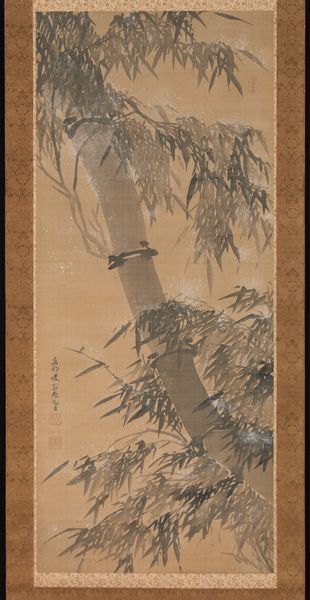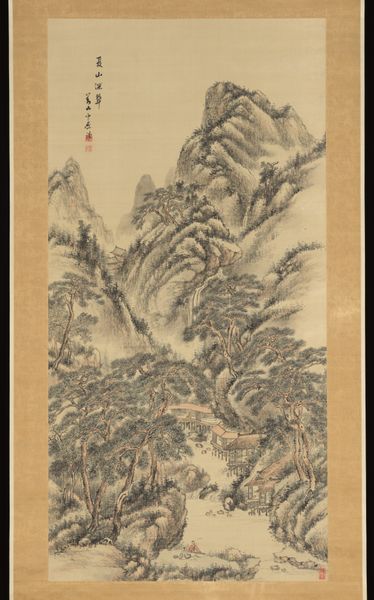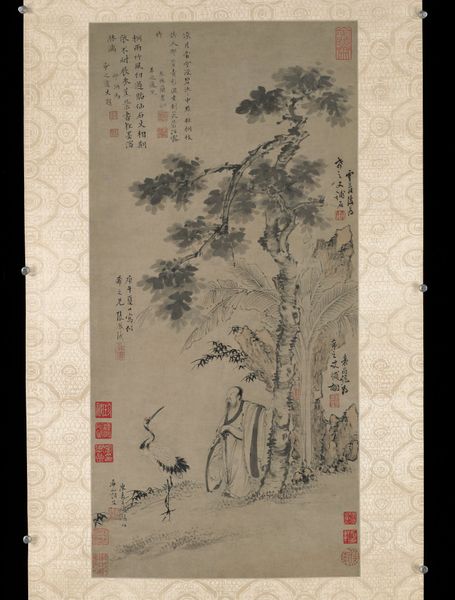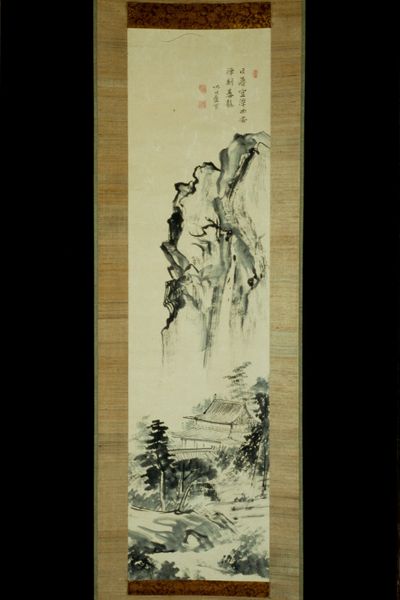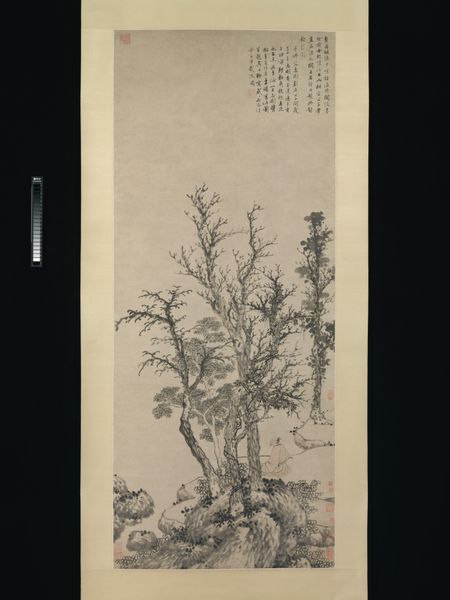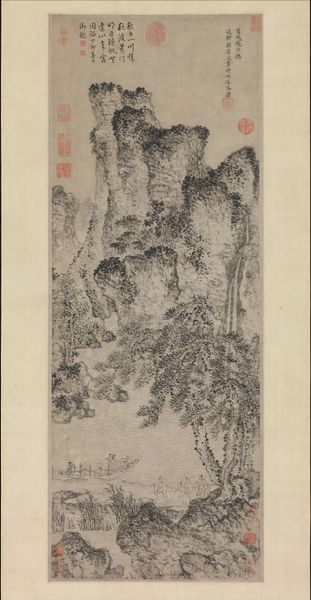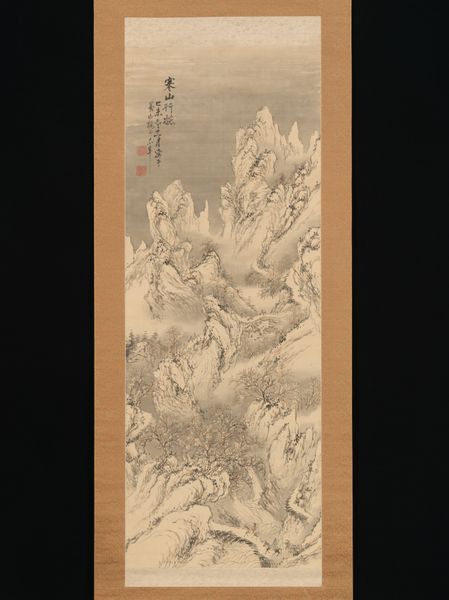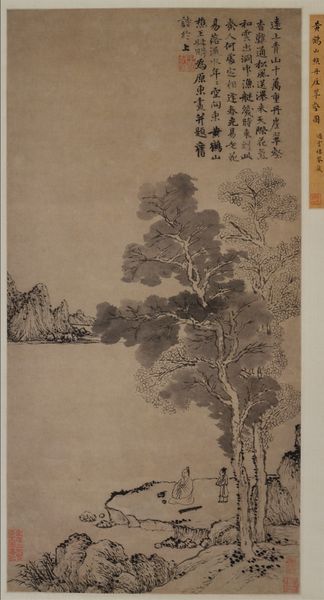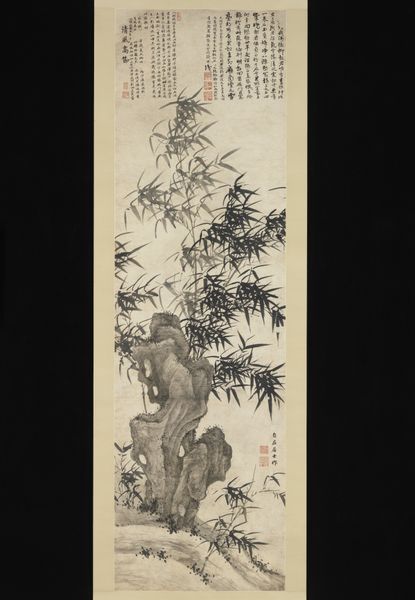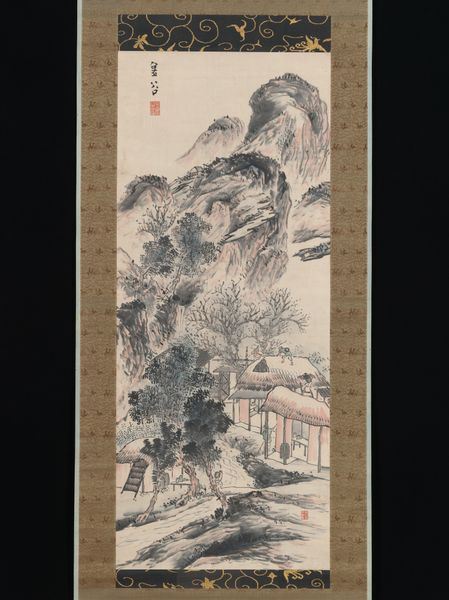
drawing, ink
#
drawing
#
asian-art
#
landscape
#
ink
Dimensions: Image: 21 9/16 × 8 7/16 in. (54.7 × 21.5 cm)
Copyright: Public Domain
Curator: What strikes me first is how stark and serene this piece feels. It’s a fairly minimal composition, almost austere. Editor: That’s “Old Pine” by Wen Zhengming, rendered sometime between 1534 and 1566. It’s an ink drawing that now resides here at the Metropolitan Museum of Art. Wen was a leading Ming Dynasty artist, scholar, and calligrapher. His work often explored themes of nature and the literati ideal. Curator: Ah, yes, literati painting. I can certainly see that aesthetic at work here. The restrained color palette, the emphasis on brushstroke, that elegantly stunted pine – there is something undeniably meditative about it. It's quite a traditional symbol isn't it, embodying perseverance and longevity. Editor: Indeed. The pine in Chinese art serves as an emblem of resilience. Consider the historical context too. During the Ming dynasty, literati painters frequently withdrew from public life due to political upheaval. So, Wen’s depiction of the old pine could represent the resilience of integrity in a corrupt world. And also in traditional landscape paintings of that time it would have represented strength of character. Curator: The negative space contributes immensely to the overall feel, enhancing that sense of quietude. And the textures! Look at the rendering of the pine bark. Notice also the detail of its twisted branches contrasted against the relatively smooth surfaces of the rock. Editor: I'm glad you've noticed the balance of forms in relation to how society used landscapes. I always read literati painting, and painting like it, as expressions of their autonomy and moral freedom. The rugged individual persisting despite adversity, expressed through this ancient pine's steadfast form. I believe it really does epitomise the ideals that shaped intellectual life at that time. Curator: I agree; this really allows us to explore the intersection of art, society and cultural ideals. Editor: Well, thinking about it purely aesthetically and beyond cultural considerations, the work presents a captivating exploration of shape and form!
Comments
No comments
Be the first to comment and join the conversation on the ultimate creative platform.

